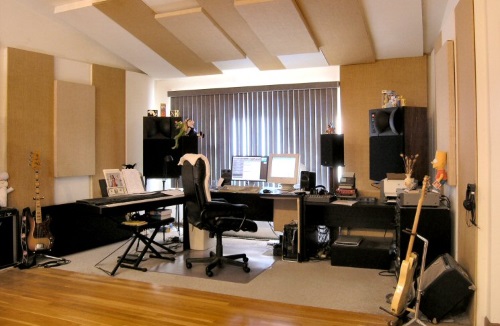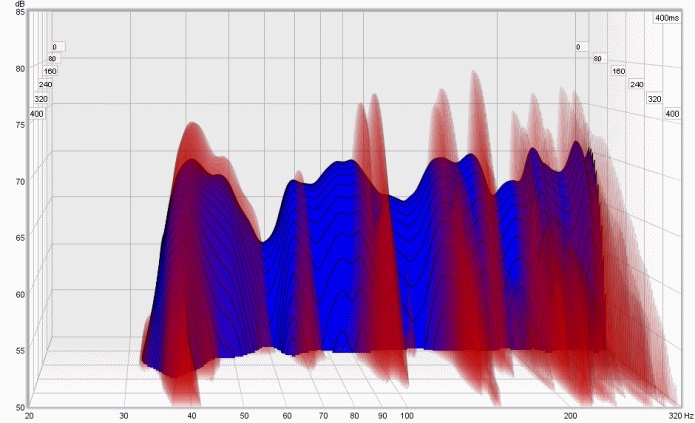
Conclusion
I agree with proponents that EQ can help to reduce the level of boomy peaks.
I know several audio professionals whose ears I trust, and I can’t refute the improvement they claim. I heard it myself when testing the Audyssey system in a small square room, as described in the Audyssey Report linked earlier. But we can’t overlook the added ringing, or the listening seats where the response was made worse.
This is why I prefer bass traps over EQ, though I agree that EQ can help in square rooms that already have bass traps.
No matter what the vendors of “room correction” devices claim, it’s simply impossible to improve one problem without creating others. And it’s also impossible to reduce ringing by a meaningful amount, or to improve nulls without adding even more ringing.
This last graph (Figure 8) from my article Bass Trap Myths shows a bedroom size space with and without bass traps. As you can see, the response and ringing are both improved, at all locations in the room, and not one location was made worse.

In home-size rooms low frequency peaks are generally 6 dB or less, but nulls are often 20-30 dB or even more. So nulls are usually the bigger problem — in a hi-fi listening room or home theater nulls are responsible for weak bass, and in a home studio nulls cause you to add too much bass to your mixes making them sound boomy everywhere else. But in square and cube shaped rooms the peaks can double up or triple, respectively, and be much more than 6 dB.
So in those rooms EQ really can help. It doesn’t reduce ringing, and it won’t help the nulls, but just lowering the level of the worst few low frequency peaks is a welcome improvement.
